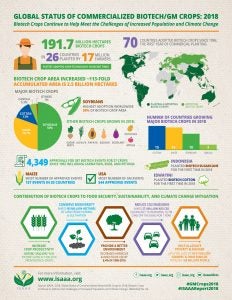The SECURE Rule will balance public safety with the elimination of duplicative and unnecessary red tape that drives public and private innovation
We don’t like to admit it, but everybody plays favorites. Subconsciously or not, this has lasting effects in the home and workplace. This resentment can stew in the “wronged” individual and throttle their advancement.
Birth order is a good analogy. Consider the Jan Brady Effect. Jan, the middle child on The Brady Bunch series, is always envious of the first-born Marsha (Marsha’s the prettier, smarter, and funnier one). It’s a self-fed inferiority complex. Don’t forget the youngest (Cindy), who by tradition should get away with practically anything.
But that’s a ’70’s sitcom. Take that dynamic and insert a different set of kin. When it comes to regulation, conventional breeding has always been a composite of the oldest and youngest child — the stateswoman that can do no wrong, tasked with responsibility, while getting all sorts of indulgences. Biotech is the envious middle child, who doesn’t get so much as an inch to work with.
But biotech is the prettier, smarter, and funnier one. Jan, it’s time to level the playing field.
First released to the public in the mid-1990s, biotech crops (aka GMOs) haven’t seen a policy update since 1987. Predictably, this posture hasn’t kept pace with advancements, leading to a grueling and incompatible mismatch between science and the guidance that shapes (and more often than not, stifles) growth.
It seems the Feds finally got the memo. The first meaningful evolution in over 30 years was recently announced. Called the SECURE (Sustainable, Ecological, Consistent, Uniform, Responsible, Efficient) Rule, it’s slated to go into effect in 2022.
So what makes SECURE so transformative? In effect, it relaxes and deregulates — balancing public safety with the elimination of duplicative and unnecessary red tape that drives public and private innovation. There hasn’t been a single flashpoint prompting this 180, but rather a steady, rigorous diet of supporting info. More data means more confidence to reassess and deregulate when appropriate.
Yet to detractors, “relaxation” suggests something very different than lounging with Mai Tais in hand; it suggests permissive negligence. They argue that this is a stealth maneuver by big business (never mind that public entities have skin in the game, and have often been shut out thanks to overregulation) to foist GMOs on the public. In particular, they contend that companies can simply take the liberty of assuming it meets the criteria for deregulation — without consulting the USDA for guidance — endangering public and/or environmental health.
But if I was an actuary and examined risk by the numbers, I’d be shocked. Not at the widespread havoc allegedly wrought by GMOs, but the acute lack of, well, anything. Nary a sniffle. A trillion meals and counting.

It’s a welcome and long overdue development. The data is unequivocal, the biotech process (transformation) is safe. It’s not inherently more or less risky, it’s just a tool to roll desirable new traits into crops. SECURE is the culmination of long-brewing sentiment that the end product should be benchmarked, not the generative process. There are select questions and “triggers” that determine regulatory treatment. If an entity (doesn’t have to be a business, can be a research institute, non-governmental organization, etc.) is unsure if their crop qualifies as exempt, they can request that APHIS (part of the USDA) conduct an assessment.
But for the more straightforward cases, a biotech crop won’t be regulated if the changes are comparatively minor. Consider a scenario where a breeder could get a GMO-esque result the old fashioned, conventional way. The risk profile of the two is exactly the same, and conventional crops aren’t subject to regulation (with very few exceptions).
Perhaps most impactful, developers won’t need to petition for approval of new varieties of an existing biotech crop. For example, if crop variety A had a certain set of genes tweaked — and the exact same transformation was performed again on variety B — the petitioner would historically have to ask for approval yet again. It’s already been vetted, why add an unnecessary layer of bureaucracy?
While SECURE has been welcomed in the scientific community, some scientists don’t think it goes far enough. Moving genes between closely related (but sexually incompatible) species like peppers and tomatoes would still require the full regulatory treatment, delaying critical industry innovations. There’s also the issue of more distant GMO-inspired splicing. Consider Citrus Greening, a bacterial disease decimating the citrus industry in Florida. A spinach gene spliced into citrus renders it immune, and could single-handedly save the industry. But as SECURE is written, this blockbuster innovation regrettably stays in regulatory limbo — a victim of its mixed pedigree.
We constantly hear about how the U.S. risks losing its competitive edge. For decades, biotech crops have been the victim of insufferable regulatory requirements. SECURE is a welcome inflection point. Fortunately, parties can now ask APHIS to expand the scope of exemptions. This effectively breathes life into an otherwise static document. It reduces regulatory costs and shortens developmental windows for new innovations. Hopefully it will energize smaller companies and public entities who ordinarily couldn’t bear the daunting burden of regulation. While imperfect, we now at least have a more rational, data-driven and dynamic platform to expedite and mainstream biotech’s fourth generation and beyond.
Tim Durham’s family operates Deer Run Farm — a truck (vegetable) farm on Long Island, New York. As a columnist and agvocate, he counters heated rhetoric with sensible facts. Tim has a degree in plant medicine and is an Associate Professor at Ferrum College in Virginia.



